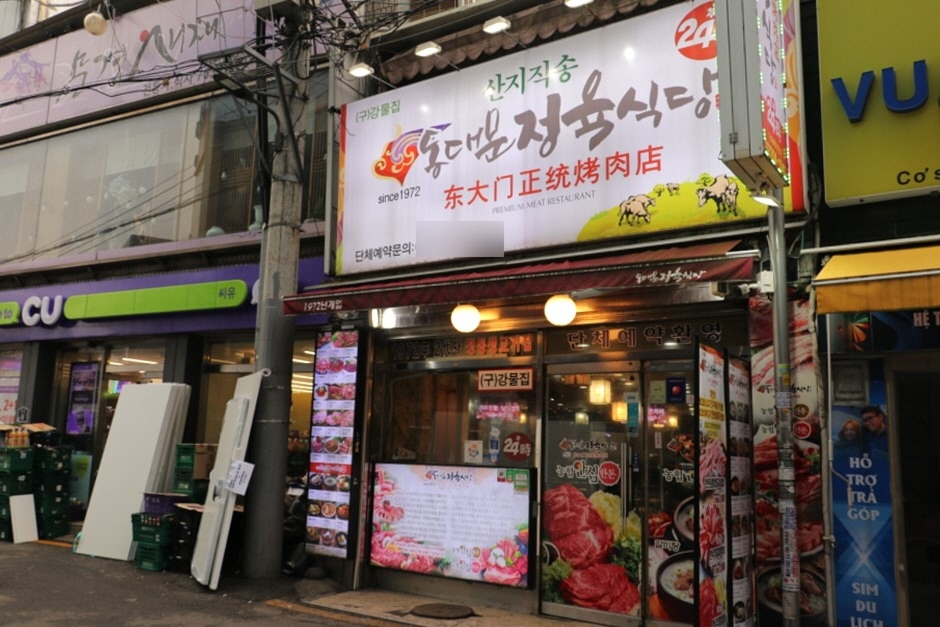PLATFORM PLACE HANNAM[Korea Quality]/플랫폼 플레이스(한남점)[한국관광 품질인증]
3.3Km 2024-06-25
268 , Itaewon-ro, Yongsan-gu, Seoul
+82-2-797-4628
Platform Place Hannam store, located near Itaewon Street in Yongsan-gu, Seoul, sells a selection of overseas brand products, including clothing, household items and kitchenware, stationery, and other designer items. Over 50 brands are featured, including Saint James, Neul, Norse Projects, Blue de Paname, Homecore, and Rocky Mountain Featherbed.The shop is right next to Hangangjin station on subway Line 6, and customers can also use a pay-for public parking lot.
Onnuri Pharmacy - Jongno Branch [Tax Refund Shop] (온누리약국 종로)
3.3Km 2024-04-19
1F, 293, Jong-ro, Jongno-gu, Seoul
-
Kuho - Hannam Branch [Tax Refund Shop] (구호 한남점)
3.3Km 2024-04-22
253, Itaewon-ro, Yongsan-gu, Seoul
-
Theory - Hannam Branch [Tax Refund Shop] (띠어리 한남점)
3.3Km 2024-04-18
251, Itaewon-ro, Yongsan-gu, Seoul
-
Lloyd - Daehangno Branch [Tax Refund Shop] (로이드 대학로)
3.3Km 2024-04-17
1F, 31, Daemyeong-gil, Jongno-gu, Seoul
-
Lunette Eyewear - Mapo Branch [Tax Refund Shop] (루네뜨안경 마포)
3.3Km 2024-04-17
1F, 24, Dohwa-gil, Mapo-gu, Seoul
-
Kervan Turkish Restaurant (케르반레스토랑)
3.3Km 2025-03-15
192 Itaewon-ro, Yongsan-gu, Seoul
Kervan is a Turkish restaurant located in Itaewon, offering authentic kebab, pidé, and Turkish desserts. It faithfully recreates the Turkish culture and food through its interior, decorated with traditional tiles, and dishes prepared by a chef from Türkiye. Main menus include Chicken steak, Rich pidé, and Chicken shish kebab.
Dongdaemun Jeongyuk Sikdang (동대문정육식당)
3.3Km 2024-03-15
7-3 Jong-ro 46ga-gil, Jongno-gu, Seoul
+82-2-764-1541
Dongdaemun Jeongyuk Sikdang is a butcher restaurant specializing in fresh meat located near Dongdaemun Fashion Town. They offer high-quality Korean beef and Korean pork sourced directly from the producers, allowing customers to choose cuts of meat according to their preferences at reasonable prices. Their savory soybean paste stew served in the center of the grill is also delicious. Customers can help themselves to additional side dishes like green onions threads and onion sauce at the self-service bar.
Sogang University (서강대학교)
3.3Km 2023-07-07
35, Baekbeom-ro, Mapo-gu, Seoul
+82-2-705-8114
Sogang University is a private, coeducational, Jesuit university located in central Seoul. Campus life at Sogang University is enhanced by student clubs as well as technological advancement. Furthermore, the proximity to other leading universities (Yonsei University and Ewha Woman's University) contributes to the intellectual and social vitality of student life at Sogang University.
![PLATFORM PLACE HANNAM[Korea Quality]/플랫폼 플레이스(한남점)[한국관광 품질인증]](http://tong.visitkorea.or.kr/cms/resource/51/2627551_image2_1.jpg)
![Onnuri Pharmacy - Jongno Branch [Tax Refund Shop] (온누리약국 종로)](http://tong.visitkorea.or.kr/cms/resource/89/2878189_image2_1.jpg)
![Kuho - Hannam Branch [Tax Refund Shop] (구호 한남점)](http://tong.visitkorea.or.kr/cms/resource/24/2890524_image2_1.jpg)
![Theory - Hannam Branch [Tax Refund Shop] (띠어리 한남점)](http://tong.visitkorea.or.kr/cms/resource/62/2890562_image2_1.jpg)

![Kasina [Tax Refund Shop] (카시나)](http://tong.visitkorea.or.kr/cms/resource/03/2891103_image2_1.jpg)
![Lunette Eyewear - Mapo Branch [Tax Refund Shop] (루네뜨안경 마포)](http://tong.visitkorea.or.kr/cms/resource/84/2878384_image2_1.jpg)

 English
English
 한국어
한국어 日本語
日本語 中文(简体)
中文(简体) Deutsch
Deutsch Français
Français Español
Español Русский
Русский